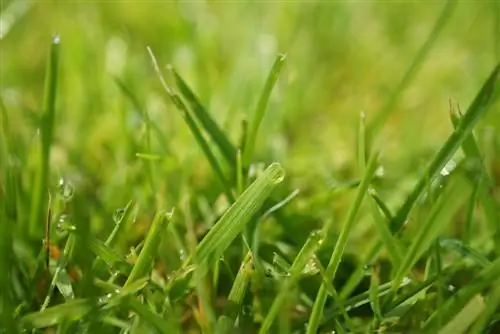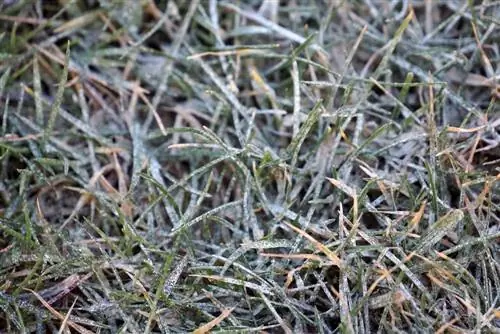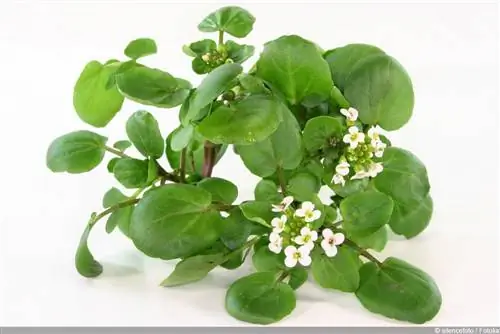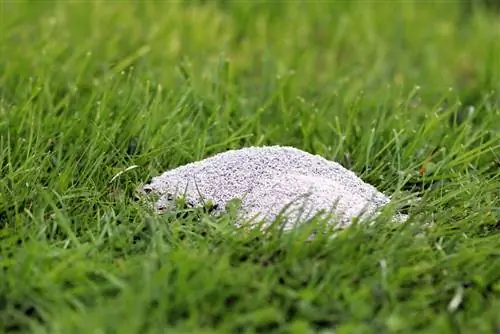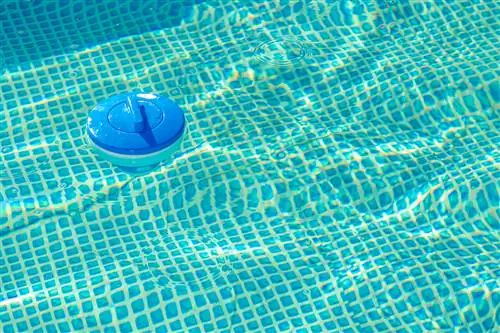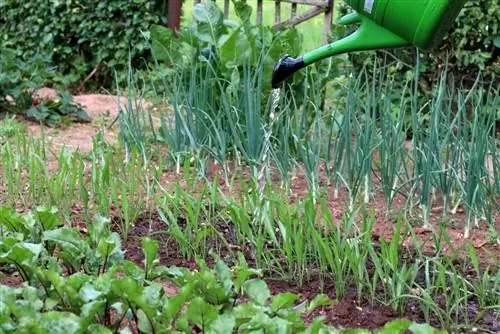- Author admin [email protected].
- Public 2023-12-17 03:39.
- Last modified 2025-06-01 06:48.
Some lawns seem to have a tendency to encourage the growth of all sorts of other plants, making them seem like a colorful expanse of all sorts of plants. Is there a way to get a lawn that looks like a lawn without hiring an English gardener? Are there miracle cures that limit lawn care to a tolerable level? The powerful lawn weed killers include Banvel M, a product that, when used correctly and dosed correctly, can bring order back to the lawn:
What can the Banvel M lawn weed killer do?
Banvel M is a herbicide that accelerates the growth of plants in a way that cannot be reproduced by the nutrient supply. The plant shoots enormously without receiving nutrients for this growth, this lack of supply now causes the plant to die down to the roots.
It contains two active ingredients, dicamba and MCPA. Both growth herbicides are absorbed via leaves and roots and transported further within the plant. After the development of both active ingredients, it was quickly observed that this growth acceleration does not work for all plants. Only dicotyledonous growth forms, such as most of our weeds, were affected, while monocotyledonous plants such as grass continued to develop. This resulted in the invention of a selective herbicide that only affects dicotyledonous plants such as: E.g. remove horsetail, clover and nettles from the lawn. Two active ingredients are used to achieve the broadest possible effect on all unwanted plants in the lawn.
Application and dosage of Banvel M
Banvel M contains 30 g/l dicamba (as 34 g/l potassium/sodium s alt) and 340 g/l MCPA (as 391 g/l potassium/sodium s alt), both as a water-soluble concentrate.
Banvel M can be used on lawns or ornamental lawns against dicotyledonous weeds. Application is limited to open fields and may take place during the growing season from April to September, but not in the sowing year. The maximum number of treatments is limited to two per crop or per year, with an interval of 28 to 42 days between treatments. Banvel M can be sprayed with a maximum application rate limited to 0.6 ml per square meter in 100 ml of water per square meter. Or it can be applied by watering, then no more than 0.6 ml per square meter should be used in 1 liter of water per square meter.
This application according to the instructions is required by law; even an overdose is subject to a fine. If Banvel M is applied during warm and growth-promoting weather, it is said to accelerate the death process of unwanted plants. However, you need a little patience: the plants have to continue growing for several days before the herbicide takes effect.
Good professional practice is still required
According to our Plant Protection Act, which was amended at the beginning of the year, the use of plant protection products is only intended when all non-chemical options have been exhausted. Today, priority is given to integrated plant protection, in which all the specialist knowledge available to the gardener should first be used.
However, if a lawn has become completely overgrown with weeds, a herbicide is often the only way to “remove the lawn.” Then, thanks to its selective effect and protection of grass plants, Banvel M is one of the herbicides that can be used in accordance with the Plant Protection Act. The Plant Protection Act stipulates that if chemicals are to be used, you should choose the herbicide that specifically eliminates the problem.
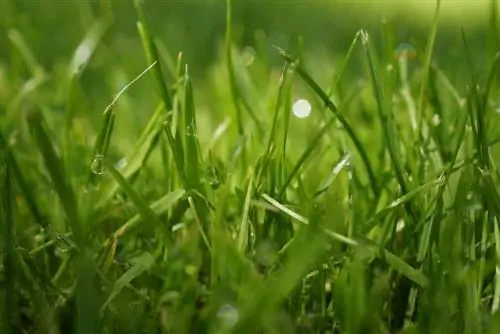
The entire law relating to plant protection is currently being reformed because the majority of citizens in our society are demanding less use of chemicals. That is why it has now been stipulated in the law that plant protection must be carried out in compliance with “good professional practice”. In doing so, the legislature has expressed that - as society demands - it will no longer stand by when gardening skills are replaced by the use of chemicals.
But purely practical experience is also reflected here: A lawn that grows on the wrong soil and is cared for incorrectly will never become a beautiful lawn, even with the constant use of herbicides. That's why you can't avoid a general inspection of the general condition of the lawn for legal and factual reasons if the weeds continue to sprout happily after using Banvel M:
Sick lawns need cause research
If lawn weeds appear more frequently, there are causes that should be eliminated if you want to live in a peaceful alliance with your lawn in the long term. Two different sets of causes can promote the appearance of weeds and should be checked and, if necessary, eliminated: The lawn may not be able to grow properly at all in the given location because it suffers from a lack of nutrients or is oversupplied with nutrients because the soil is too low or too high pH value because the lawn is frequently exposed to drought or waterlogging, because the soil is so compacted that the lawn cannot grow, etc. Or the lawn suffers from improper care, which results in grass cutting that is too short, incorrect watering or… incorrect fertilization can express. Perhaps the entire lawn seed mixture selected is not suitable for the location and the stress to which the lawn is exposed.
Caution when using
Although Banvel M is approved for use in home and allotment gardens according to the latest list of plant protection products, the active ingredients it contains are not entirely harmless:
- Dicamba is a benzoic acid derivative which, according to the EU Hazardous Substances Label and the United Nations Hazardous Substances Label, is harmful if swallowed, poses a risk of serious eye damage and is harmful to aquatic organisms with long-term effects. Accordingly, comprehensive protective clothing should be worn when handling the active ingredient, contact with the eyes should be immediately rinsed with water and the doctor notified, and release into the environment should be avoided.
- MCPA, a phenoxycarboxylic acid, has similar information, but it is classified as very toxic to aquatic organisms with long-term effects and also causes skin irritation. Products containing MCPA and their containers should be disposed of as hazardous waste.
- Both are neurotoxins, you should be particularly careful when handling MCPA: A formulation of phenoxyacetic acid was used as a defoliant in the Vietnam War and, according to a comparative study by the Cancer Registry of Central California, is very likely to cause leukemia. There are scientists who also suspect that other formulations in the MCPA family have carcinogenic potential. An overly casual approach to the maximum permitted amounts and the legally mandated safety regulations is therefore really not appropriate for these active ingredients.

